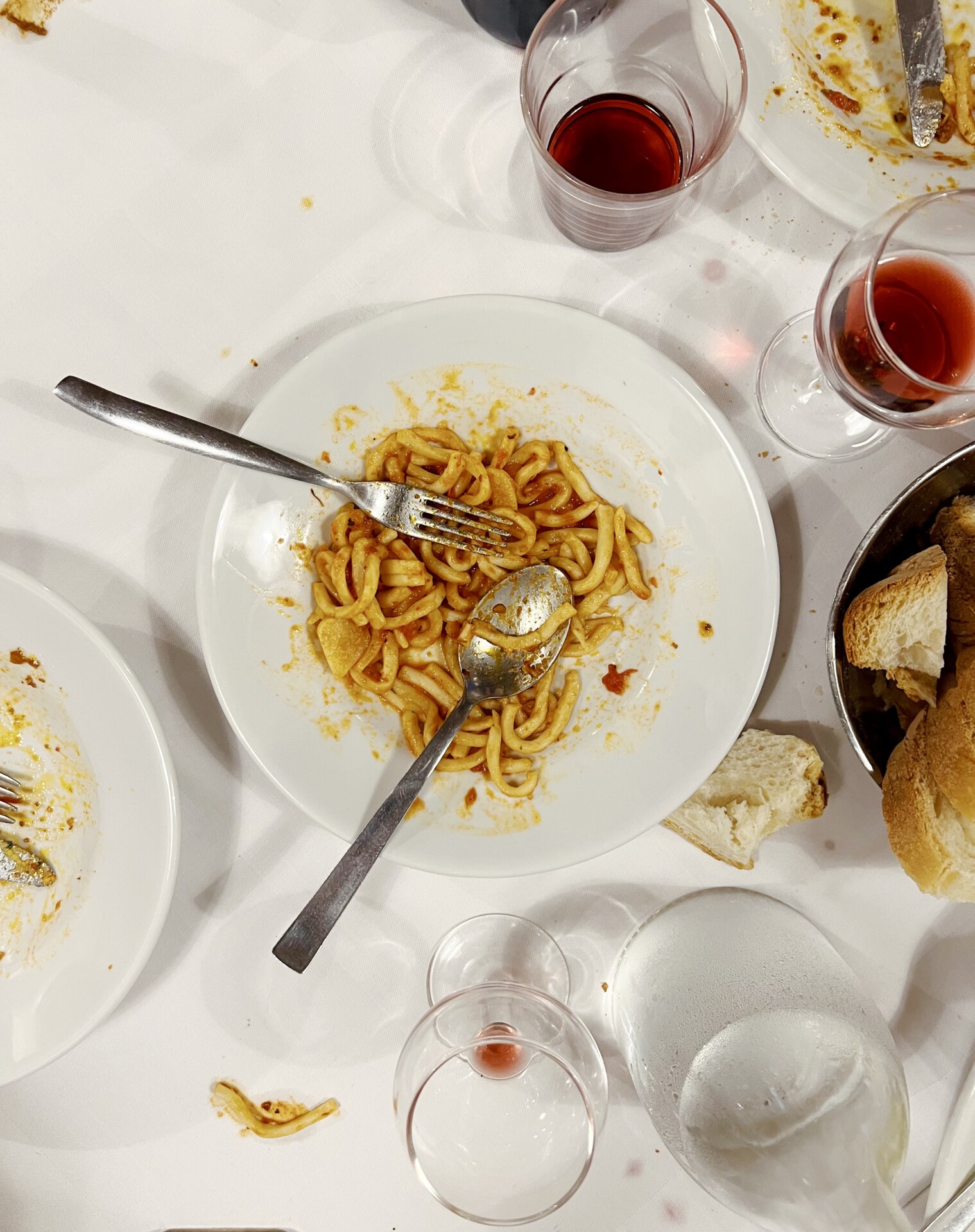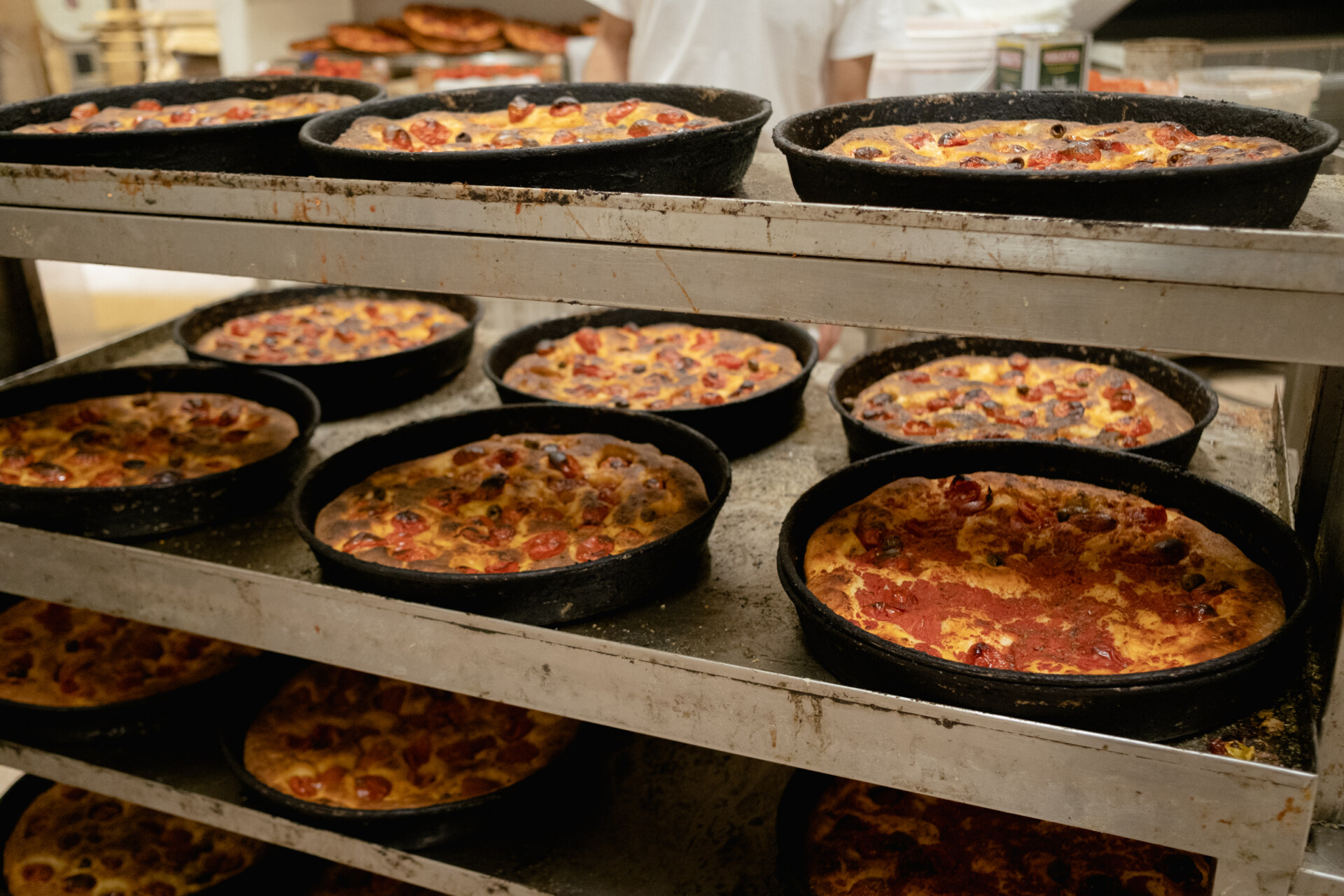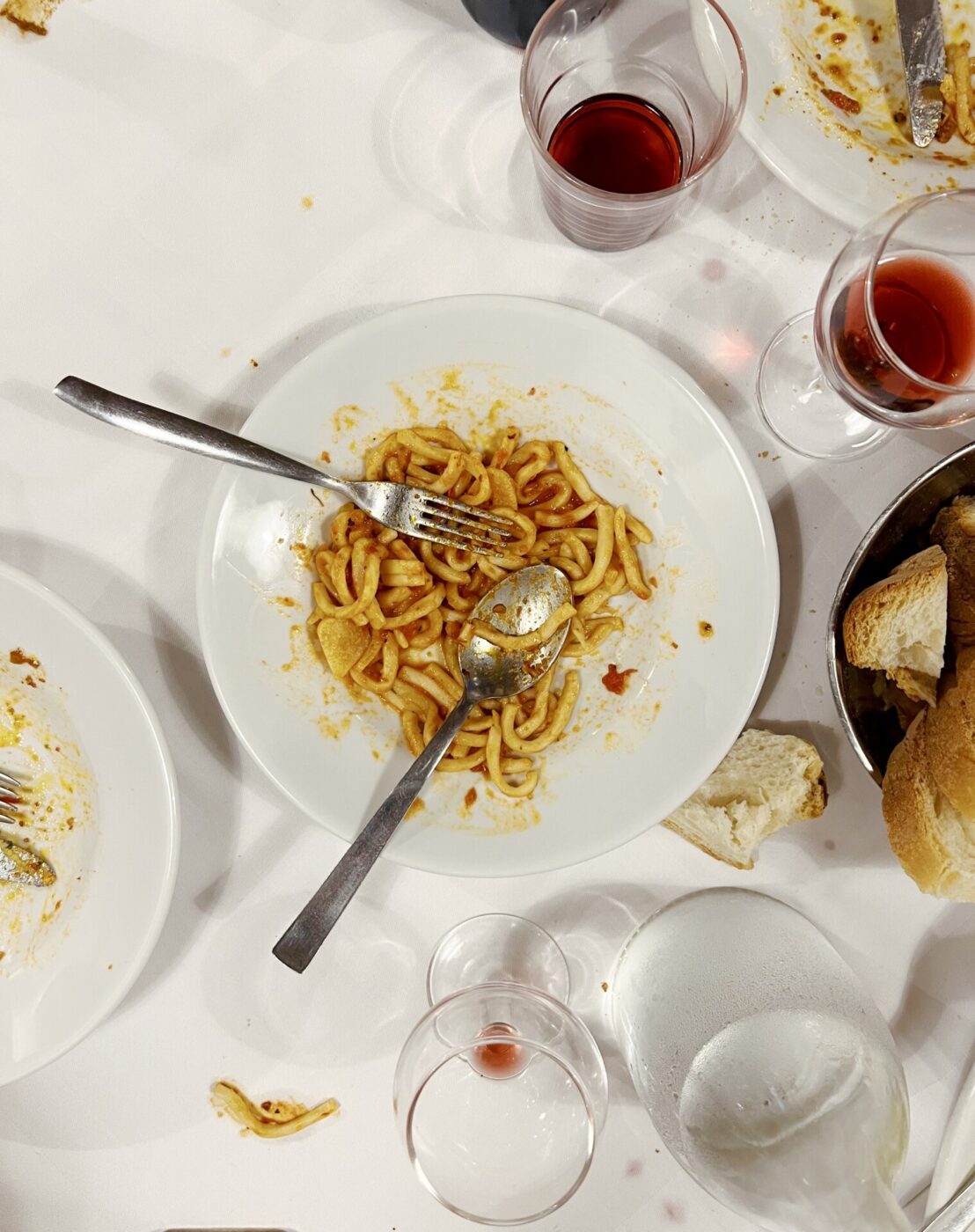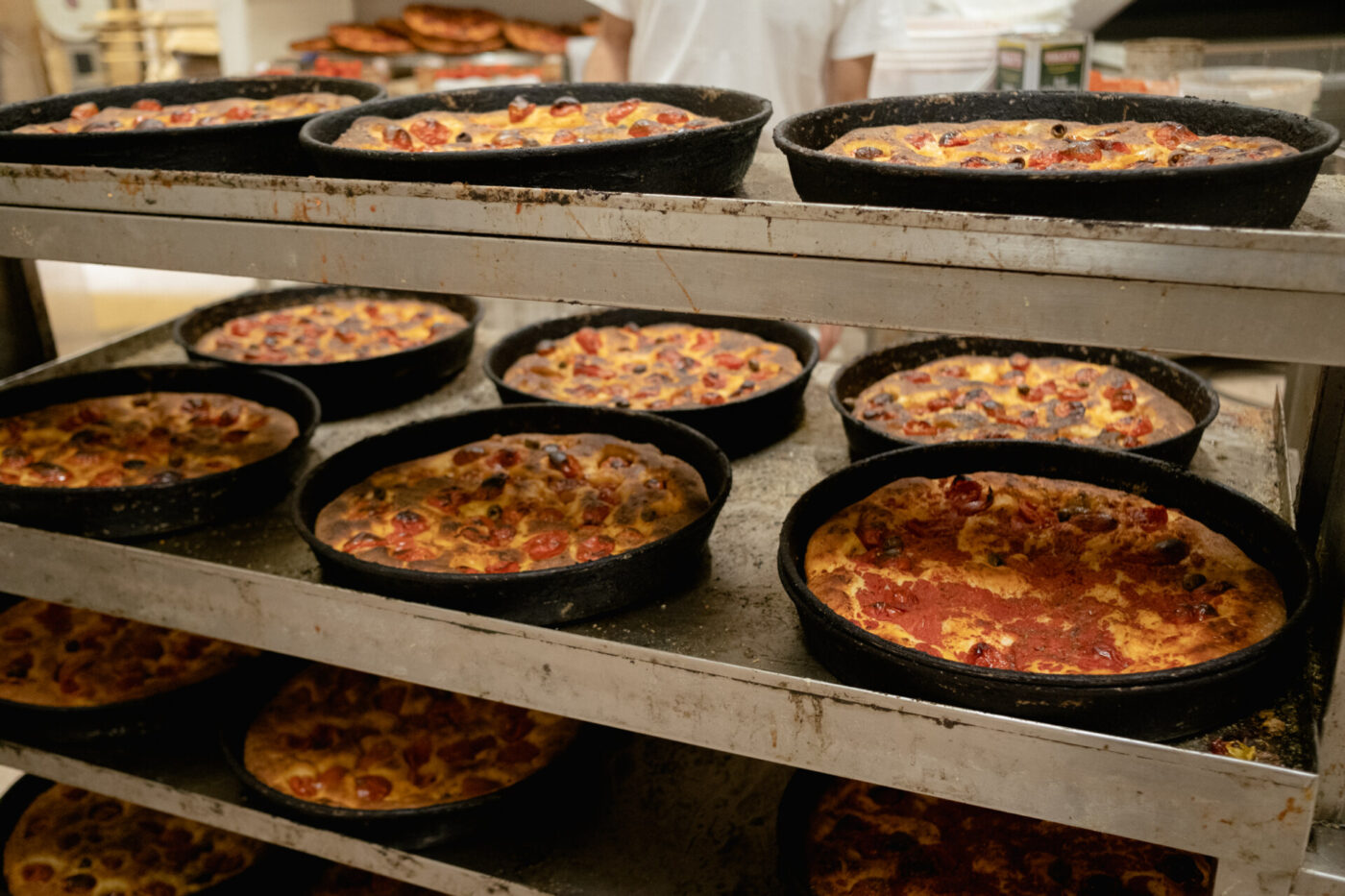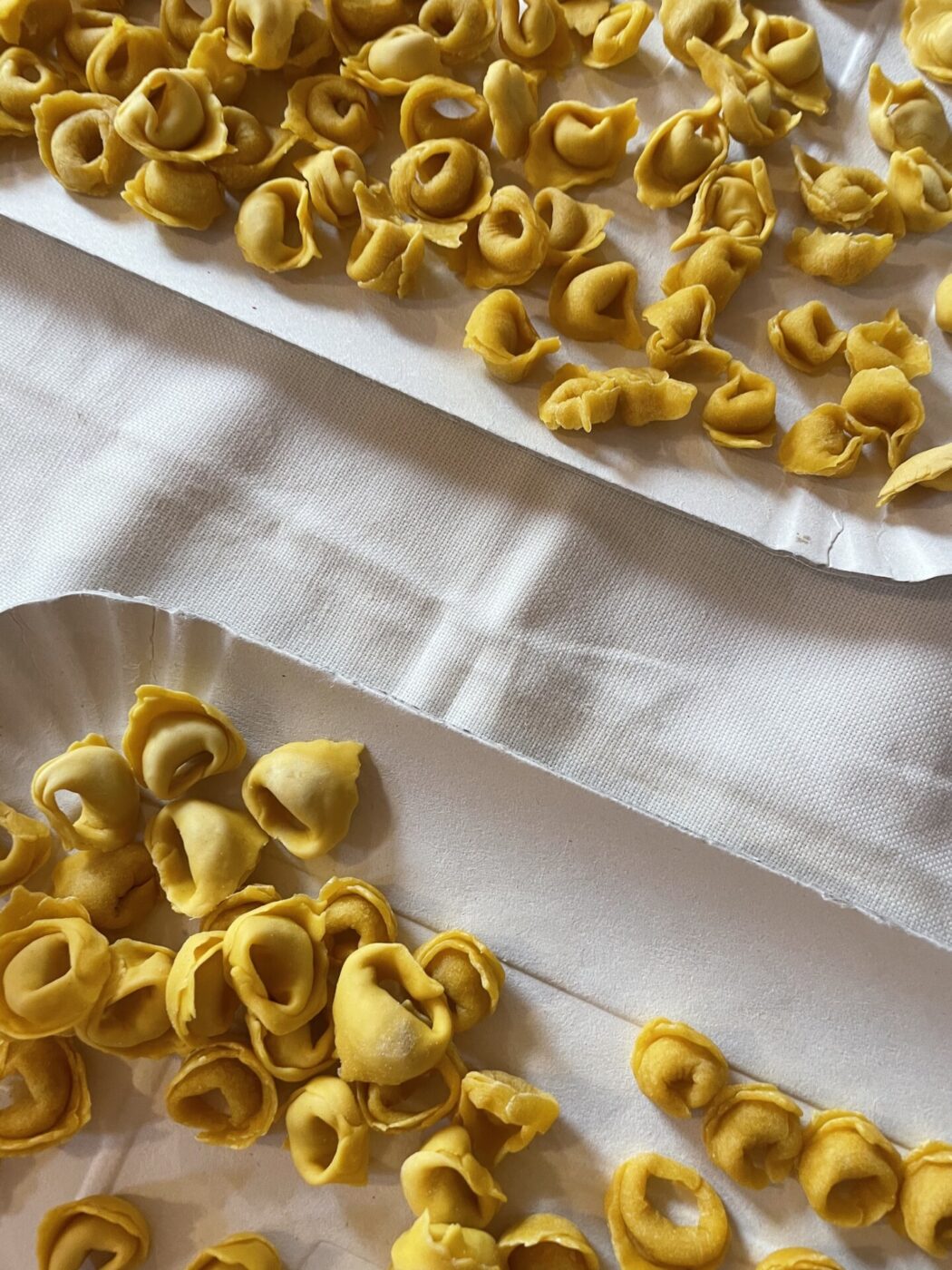BREAD
Best Bread/Cheese Combo: Focaccia di Recco. Crispy, cheesy, hot, and perfectly greasy. Focaccia di Recco, aptly from Recco in Liguria but found all along the coast, truly has it all.
Best Loaded Bread: Focaccia Barese. Fluffier than its Ligurian counterpart, Focaccia Barese–studded with olives, tomatoes, and potatoes–proves that from North to South, loaded focaccia is truly the way to go.
Best Historical Bread: Coppia Ferrarese was first invented for the curls of Lucrezia Borgia; the intertwining arms forming an “X” were meant to represent her union to the Duke of Ferrara.
Best Breakfast Sandwich Stand-In: Casatiello. Ok, so we have a thing for stuffed breads, it seems. This one, traditionally eaten at Easter in and around Naples, is a fluffy, donut-shaped treat filled with pieces of hard boiled eggs, pancetta or prosciutto, and pecorino.
Best Breakfast, Period: Brioche col Tuppo. We weren’t sure whether to put this in the dessert category or the bread category, but it is technically a bread, so here we are. Fluffy, pillowy, sweet brioche is one half of the Sicilian breakfast par excellence, brioche con granita.
…whatever you do, just avoid pane Toscano. And, when in season, run for Christmastime panettone–here are some of our favorite variations around Italy!

Focaccia di Recco; Photo by Nicolò Leone
PASTA
Best Pasta To Say Is Best in Order to Anger Our Founders*: Bucatini is a pasta so beloved it caused a worldwide shortage during the pandemic. With its spaghetti-like strands and extruded center, the noodle is perfect for sopping up sauces like amatriciana and carbonara.
*Many will attest (including our upper editorial department) that rigatoni is the ultimate pasta for carbonara and amatriciana, so this inclusion was controversial to say the least.
Best Filled Pasta: Tortellini. These little ring-shaped pastas, typically filled with minced and browned veal or pork loin and Parmigiano, hail from the pasta-rich land of Emilia-Romagna. Locals claim that the shape was inspired by the goddess Venus’ belly button. Choosing between in brodo or alla crema di parmigiano is like choosing between divorced parents.
Best Name/Cute Factor: Orecchiette. Meaning “little ears” for the way they’re shaped, this classic shape from Bari is found all around Puglia, laden with a simple passata or garlicky cime di rapa. We love watching the nonne of Bari skillfully make them, all lined up in front of their houses on a winding side street.
Best Eaten Plain: Agnolotti del Plin. These Piedmontese ravioli are like tiny pillows, usually stuffed with veal and/or cheese. Historically, they would be eaten plain, served folded in a cloth napkin (“al tovagliolo”), so that the diner would appreciate them unmarred by any sauce. Today, we like to eat them with a delicate butter and sage sauce to truly appreciate the savory fillings and silky dough, but we’re still a fan of the many restaurants that serve you a few plain ones in a napkin on the side.
Best For Girth and Length: Pici. These traditionally hand-rolled, worm-like strands are the perfect amount of chewy and twirly, making them an ideal shape for a sauce that can stand its own against a thicker pasta, like Tuscan aglione or Roman cacio e pepe.

Agnolotti del Plin; Photography by Kelly Puleio
HARD CHEESE
Most Royal: Parmigiano Reggiano, also known as the “king of cheeses.” And truly, it reigns. This DOP-stamped cheese can only be considered true Parmigiano Reggiano if it hails from Parma, Reggio Emilia, Modena, or Bologna. Perfect on pasta or broken off in chunks and eaten with a drizzle of balsamico, a good aged parm is probably our desert island cheese.
Best Pasta Pal: Pecorino Romano. Salty and a little piquant, this sheep’s cheese is made in variations all over Italy, but the Roman version is our favorite. As the integral ingredient to all four famous Roman pastas, how could it not be?
Best Eaten Old: Bitto Storico. Named for the Bitto river in Lombardy, this Slow Food Presidium cheese is only made in the summer months, from cow’s milk which is then added to goat’s milk. The more goat’s milk is added, the longer it can be aged–many varieties are more than 10 years old, and only get better as they mature.
Best Farmy Funk: Fiore Sardo. Made from raw sheep’s milk, this is the first cheese made on the island by Sardinian shepherds. Awarded a DOP stamp in 1996, Fiore Sardo is crumbly in texture, smokey in flavor, and packs a good strong punch.
Most Fondue-able: Fontina. Valle D’Aosta gives fondue a run for its money with fonduta, richer than its Swiss counterpart with this cow’s cheese, butter, cream, milk, and egg yolks to create a dip that takes on a custard-like texture.
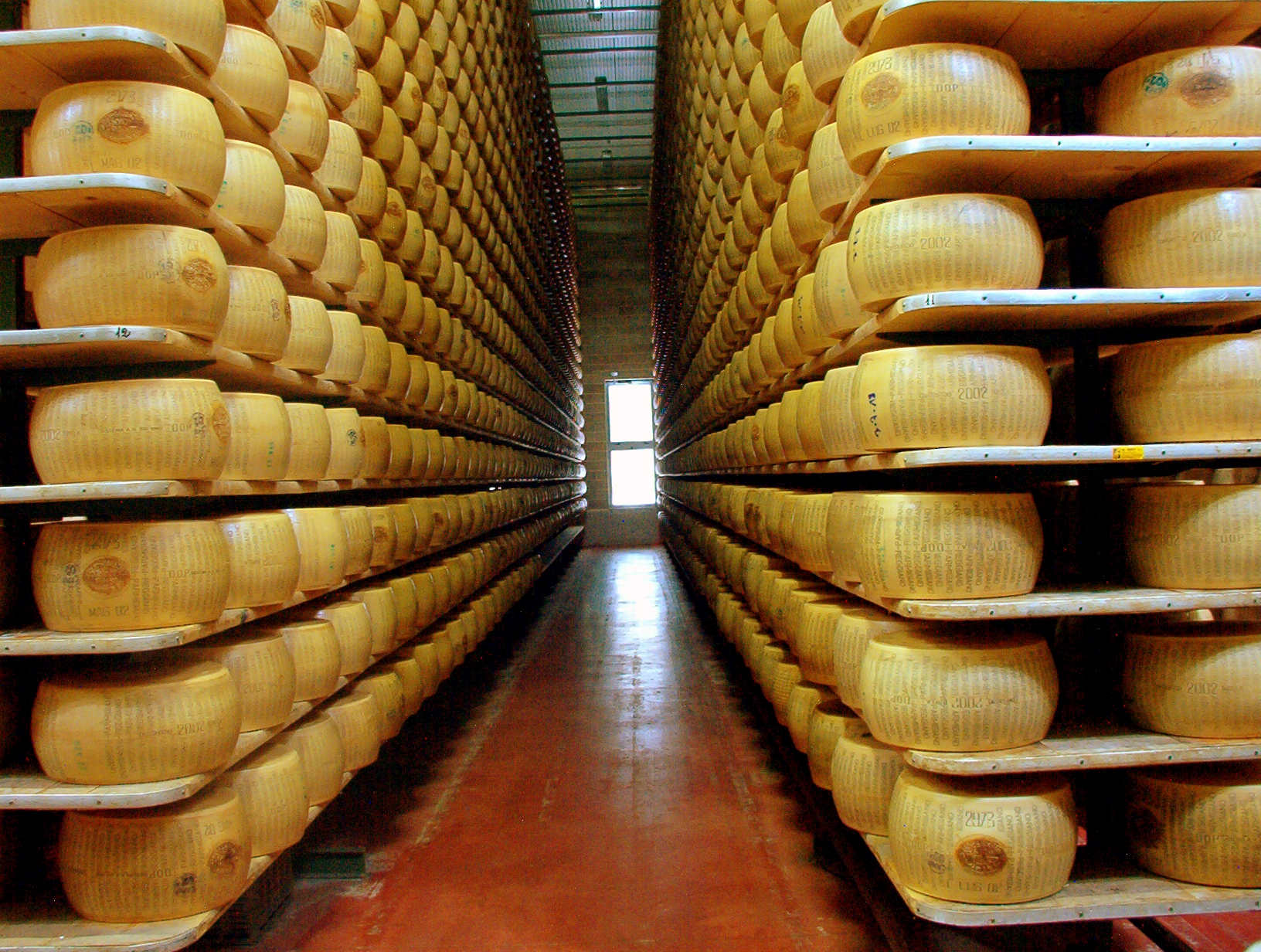
Parmigiano Reggiano
SOFT CHEESE
Best Non-Cheese Cheese: Ricotta Siciliana. You simply haven’t had ricotta until you’ve had it in Sicily. While not technically a cheese, ricotta is so integral to the island’s gastronomy (and frankly, to our own diets) that we don’t care. Spread it on bread, stuff it in cannoli, or eat it with a spoon–you can’t lose.
Best Pizza Topper: Mozzarella di Bufala Campagna. Made from buffalo milk, these little balls of brined heaven are perfect just as they are, but even better when adorning a classic Neapolitan pizza margherita.
Best Burrata Replacement: Stracciatella. Everybody and their mother loses their minds over burrata, but we’re partial to her sister, stracciatella, which is just the broken, uber-creamy inside part.
Best For Aperitivo: Tuma. This Piedmontese classic, traditionally made from cow’s or sheep’s milk, is slightly sweet, semi-soft, and delicate. It’s the perfect companion to honey, jams, and a good glass of Barolo at aperitivo.
Best To Make Us All Lose Our Minds: Manicomio. Produced by–and only by–the genius at Giolito cheese shop in Bra, Piedmont, known to bring members of our editorial staff to their knees. It’s a heavenly hybrid between a gorgonzola dolce, mascarpone, and a secret third ingredient. It’s eat-with-a-spoon creamy, soft, but pungent. It’s perfect

Mozzarella di Bufala
DESSERT
Best Convent-Derived Treat: Cannoli. Like many Sicilian desserts, cannoli were most likely developed by nuns. These little tubes of fried dough are piped with fresh ricotta and adorned with orange zest, chocolate chips, pistachios, or a cherry on top. Just be sure to get them to fill it for you on the spot, so you don’t end up with a soggy bite.
Best Entertainment Value: Panna Cotta. This set, creamy, custard is as fun to watch jiggle as it is tasty. Often served with a frutti di bosco or caramel topping, it’s also delicious infused with aromatics like vanilla or lavender and topped with any kind of fruit, nuts, chocolate… basically anything.
Best PR of Any Italian Dessert: Tiramisu. Invented in the 1960s in the Veneto region, tiramisu, whose name literally translates to “pick me up”, has skyrocketed to international fame, and for good reason. Layers of spongy savoiardi biscuits soaked in espresso (and often, Marsala or amaretto), layered with mascarpone and powdered cocoa, with variations and additions hotly debated all throughout the boot and the diaspora.
Best Sweet n’ Sour Combo: Crostata ricotta e visciole. Originating in the Roman Jewish community, this crostata highlights the best sweet-but-not-too-sweet Roman ingredients, sheep’s milk ricotta and sour visciole cherries. The former is layered on top of a traditional crostata pastry crust, and then topped with fresh visciole jam (or sometimes just the fruits themselves).
Best Breakfast Pastry: Sfogliatella. Another one that straddles the line between breakfast and dessert, Neapolitan sfogliatella is pastry perfection. Layers of flaky, puff pastry dough filled with pastry cream or ricotta scented with orange zest and warm spices (or often variations like nutella or pistachio cream). It’s an explosion (often literally–eating these gets messy) of texture and aroma.

Tiramisù
BONUS CATEGORY: THE GLUTEN- AND DAIRY-FREE
Best Dessert for Those Deeply Digestively Troubled: Castagnaccio, a chestnut flour cake that hails from the regions of Tuscany, Liguria, and Emilia-Romagna and is flavored with rosemary, pine nuts, and raisins. Unfortunately, it’s a seasonal sweet and can usually only be found during autumn.
Best Gluten-Free Primo: Risotto, the absolute underdog of the primi section. They make it best in Milan, where it’s perfumed with saffron and cooked with a handsome portion of butter and Grana Padano or Parmigiano. (Note: Copious amounts of butter are usually included. The lactose-intolerant should not touch this plate with a ten-foot pole.)
Best Non-Substitute Milk: Sicilian almond milk, sweet, rich, and a drink in its own right. Typically served chilled to combat the torrid heat of the summer months, venture into a Sicilian cafe to order a glass of the freshly made drink, sometimes flavored with honey or a pinch of cinnamon.
Best Focaccia Alternative (If You Can’t Order Both): Cecina, an unleavened pancake, almost crêpe-like, made from chickpea flour–both gluten- and lactose-free. Those who can’t eat wheat can use the stuff as a base for a delectable panino of stracchino and prosciutto.
Most Sumptuous Gluten-Free Dessert: Torta pistocchi. In 1990, Chef Claudio Pistocchi invented a cake using just cioccolato fondente, bitter cocoa powder, and a little cream. The cake is as rich and dark as you’d imagine, incredibly creamy and best served at room temperature. It has become so famous that the Pistocchi family trademarked it, and you can buy it online. Many Florentine restaurants serve their version of the well-loved, eggless, flourless cake with the non-trademarkable name “torta al cioccolato”.
